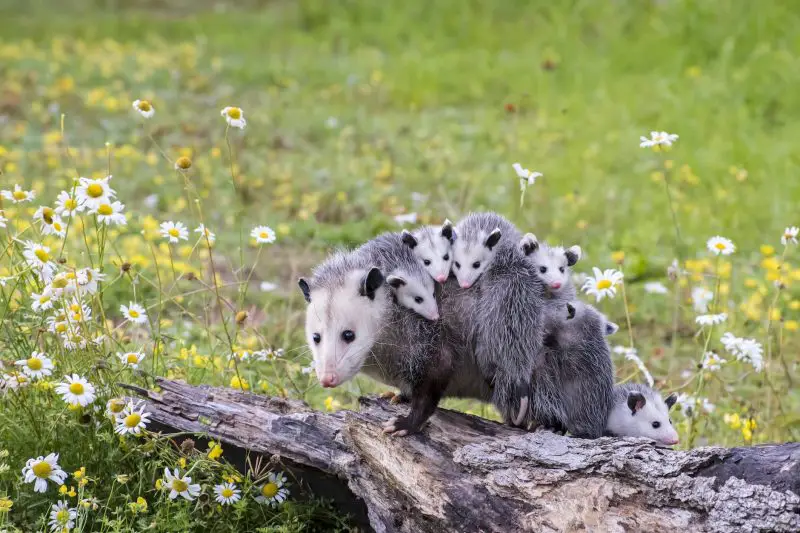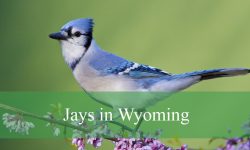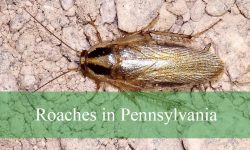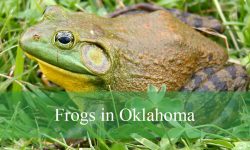Opossums are a familiar sight throughout Missouri, appearing regularly in neighborhoods and natural areas alike. These nocturnal creatures are often misunderstood and underestimated, yet they play a surprisingly important role in the local ecosystem. Known for their distinctive appearance and unique behaviors, opossums have quietly adapted to life alongside humans across the Show-Me State. While many residents may encounter them rummaging through garbage or crossing roads at night, there’s a lot more to these marsupials than meets the eye.
In this article, we will explore five fascinating facts about opossums in Missouri that will change the way you see them. From their incredible resistance to disease to their crucial role in pest control, opossums deserve more appreciation than they typically receive. Let’s dive into what makes these animals so remarkable.
Opossums Are North America’s Only Native Marsupials

One of the most surprising facts about opossums is that they are the only marsupial species found in North America. Unlike most mammals that give birth to fully developed young, marsupials carry and nurture their offspring in a pouch. The Virginia opossum, which is the species native to Missouri, follows this reproductive strategy and shares this trait with kangaroos and koalas, even though it is thousands of miles away from Australia.
After a very short gestation period of about 12 to 13 days, baby opossums—known as joeys—are born blind and helpless, each no bigger than a honeybee. They crawl into their mother’s pouch to continue developing for several weeks. Once they’re strong enough, they begin to explore the outside world while still clinging to their mother’s back, learning survival skills along the way. This unusual method of parenting gives opossums a distinct advantage, allowing mothers to remain mobile while still protecting their vulnerable young.
The presence of a marsupial in Missouri highlights the incredible adaptability of wildlife in the region. Opossums have evolved to thrive in environments ranging from dense forests to suburban neighborhoods, which is why they are such a common sight throughout the state.
Their Immunity to Snake Venom Is Nothing Short of Incredible
Among the most astonishing biological traits of the opossum is its natural resistance to snake venom. In Missouri, venomous snakes such as copperheads, cottonmouths, and rattlesnakes pose a threat to many animals, but opossums are uniquely equipped to survive encounters with these dangerous reptiles.
Scientists have discovered that opossums produce a special protein in their blood that can neutralize venom from pit vipers. This means that even if an opossum is bitten, it is highly unlikely to suffer the same fate as other mammals. This adaptation not only helps them survive in snake-prone environments but also gives them the confidence to prey on snakes that most other animals would avoid.
Research into this unique resistance has even opened the door for potential medical breakthroughs. Scientists are studying the opossum’s venom-neutralizing peptides in hopes of developing new anti-venom treatments for humans. In this way, the opossum’s biology could one day contribute to saving lives beyond the animal kingdom.
This snake immunity adds yet another layer of fascination to an already remarkable species, reinforcing just how complex and specialized opossums have become in their natural role within Missouri’s wildlife web.
Opossums Play an Essential Role in Controlling Ticks and Pests
While opossums may not have the best reputation—often seen as dirty or a nuisance—they are actually some of nature’s most effective pest controllers. One of the most valuable services they provide is their appetite for ticks. A single opossum can eat thousands of ticks in a single season, helping reduce the spread of tick-borne illnesses like Lyme disease, which is increasingly a concern in Missouri.
As meticulous groomers, opossums often find and consume ticks that attach to their bodies. In the process of cleaning themselves, they ingest these parasites and inadvertently help lower tick populations in their habitats. This natural tick control is particularly important in regions where tick infestations can pose risks to humans, pets, and livestock.
Beyond ticks, opossums also feed on a wide array of unwanted critters. Their diet includes slugs, beetles, cockroaches, and even small rodents. As opportunistic omnivores, they will also consume fallen fruit and waste, essentially acting as organic recyclers. By cleaning up what other animals leave behind, opossums help maintain ecological balance and reduce the spread of disease in their environment.
So while many people may cringe at the sight of one rooting through a compost pile or wandering near a shed, opossums are quietly providing a valuable public service. Their presence in Missouri gardens and backyards might be more of a blessing than a bother.
Playing Dead Is a Real Defense Mechanism—Not Just an Act
Most people are familiar with the phrase “playing possum,” but many don’t realize that this behavior is not a conscious choice. When confronted with extreme fear or a life-threatening situation, an opossum enters a state called “thanatosis,” a kind of temporary paralysis triggered by the nervous system. It’s an involuntary reaction, much like fainting, and it can last from a few minutes to several hours depending on the perceived threat.
During this state, the opossum lies limp with its mouth open, eyes closed or glazed over, and tongue hanging out. It may also secrete a foul-smelling liquid from its anal glands to mimic the scent of decaying flesh. This gruesome performance is often enough to convince predators that the animal is already dead and unappetizing, giving the opossum a chance to escape once the danger has passed.
This defense mechanism is highly effective against predators such as foxes, coyotes, and even domestic dogs. Many predators prefer fresh kills and will abandon what they believe to be a rotting carcass. This biological trick has helped opossums survive for millions of years despite their slow movements and lack of physical weapons like sharp claws or strong jaws.
In Missouri’s diverse landscape, where both natural predators and human threats abound, playing dead remains one of the opossum’s most reliable survival strategies. It’s a fascinating example of how evolution has equipped even the most vulnerable creatures with remarkable tools for self-preservation.
Their Adaptability Makes Them Urban Survivors
Perhaps one of the most surprising facts about opossums in Missouri is how well they’ve adapted to urban and suburban environments. While originally native to wooded areas and wetlands, opossums are now thriving in cities and towns across the state. From St. Louis to Springfield, they’ve found creative ways to coexist with humans.
Opossums are nocturnal scavengers with an incredible sense of smell, allowing them to locate food sources like pet food, bird seed, compost, or even leftover pizza crusts in trash bins. They are excellent climbers and are often found nesting in attics, garages, and under decks—anywhere that offers shelter and warmth. Their ability to live in such close proximity to humans while remaining mostly unnoticed speaks to their quiet adaptability.
Missouri’s climate and food availability provide an ideal setting for opossums to flourish year-round. They do not hibernate but will remain in dens during particularly cold spells, emerging during milder days to forage. They rotate between several shelters throughout their territory, making use of abandoned burrows, hollow logs, and human-made structures as needed.
This level of flexibility is one of the reasons opossums have expanded their range so successfully across North America. Their generalist lifestyle and tolerance for various environments ensure that they are here to stay. Whether roaming wooded trails or alleyways behind apartment buildings, opossums are a natural part of Missouri’s evolving wildlife landscape.
Final Thoughts on Missouri’s Most Misunderstood Mammal
Opossums are often misjudged as pests or disease carriers, but a closer look reveals an animal that is far more beneficial than harmful. Their unique biology, from marsupial pouches to venom resistance, makes them one of the most intriguing mammals found in Missouri. Their role as natural pest controllers and their quirky defensive behavior add to their charm and ecological importance.
Understanding opossums and their place in the local environment can help foster a more respectful and informed relationship between humans and wildlife. As urbanization continues to spread, interactions between people and animals like opossums will only become more frequent. Recognizing their value rather than fearing their presence can lead to better coexistence and more effective wildlife management strategies.
Next time you see an opossum waddling across your yard or frozen in place near the roadside, take a moment to appreciate this fascinating creature. Behind its beady eyes and prehensile tail lies a survivor with millions of years of evolutionary wisdom—and an important role to play in the natural world of Missouri.
FAQs about Opossums in Missouri
What do opossums eat in Missouri?
Opossums are opportunistic omnivores that eat insects, ticks, fruit, small animals, and even human food scraps. Their diet makes them valuable for pest control in both wild and suburban areas.
Are opossums dangerous to humans or pets?
No, opossums are generally not dangerous. They are shy, non-aggressive animals that prefer to avoid confrontation. They rarely carry rabies due to their low body temperature and effective immune system.
Where do opossums live in Missouri?
Opossums inhabit forests, wetlands, and urban areas throughout Missouri. They create dens in hollow trees, brush piles, under sheds, and even in attics or crawl spaces.
What should I do if I find an opossum in my yard?
If the opossum is not injured or causing problems, it’s best to leave it alone. They help control pests and will likely move on soon. If needed, you can discourage them by securing food sources and blocking entry points.
Do opossums hibernate during Missouri winters?
Opossums do not hibernate, but they do reduce activity during cold weather. They rely on dens and fat reserves to stay warm, emerging to forage during milder periods.






